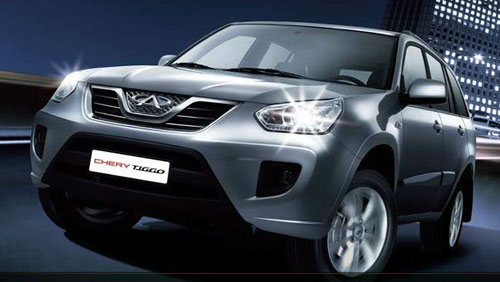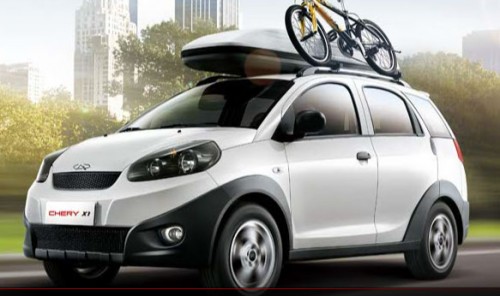
Other than Proton, who else uses ‘FL’ to mark a facelift? This is the Chery Tiggo FL!
There are so many car brands in China that only a visit to a Chinese motor show will open one’s eyes. But apart from a handful, most of these brands are unknown outside the country, or province. One of the better known ones is Chery, which is also China’s largest passenger vehicle exporter.
Chery seems to have the vision its peers don’t. The Anhui based state owned company exported 122,441 vehicles in the first nine months of 2011, up 80% year-on-year. This surge of exports has allowed the company to achieve its original 2011 target of 122,000 units three months ahead of schedule. For the whole year, Chery expects to ship 180,000 vehicles overseas.
Who’s buying their cars? Exports to emerging markets have been especially strong. Fellow BRIC country Brazil is Chery’s largest export market, followed by Russia and Ukraine. Chery plans to export to Europe after 2015.
They won’t go it alone. According to a German report from last month, Chery Quantum Auto, a 1.5 billion euro joint venture between Chery and Israel Corp, will build three compact models to be sold in China and exported to Europe, reaching the continent next year. The cars, developed by Magna Steyr, will be built at a new factory near Shanghai with an initial capacity of 150,000 units per year, rising eventually to 500k units.
The cars, designed to meet Western standards and expected to cost around RM46,700 to RM63,500, will be sold under a new brand called Qoros. Read our post on that here.
Looking to sell your car? Sell it with Carro.









AI-generated Summary ✨
Comments expressed frustration with Proton's slow progress and reliance on government protection, comparing it unfavorably to China's Chery, which has achieved significant export success within a relatively short period. Many noted that Chinese automakers benefit from large economies of scale, government support, and aggressive development, allowing them to surpass Malaysian companies in global markets. Some comments highlighted that Proton's competitors, like Hyundai and Kia, have rapidly improved through innovation and efficient production. There was also criticism of Proton's pricing, safety standards, and market expansion strategies, with calls for the company to focus on higher quality, faster innovation, and broader export plans to remain competitive. Overall, sentiments leaned towards skepticism about Proton’s current pace and strategies, contrasting sharply with the rapid progress of Chinese carmakers.